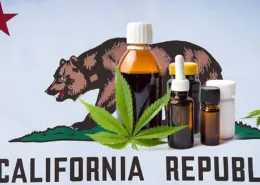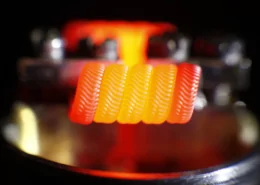Banning Vape Flavors Undermines Smoking Cessation Efforts: Understanding the Role of Flavors in Harm Reduction
Brussels is considering a blanket ban on flavored vaping products, a move that could have serious unintended consequences for consumers and undermine smoking cessation efforts. Despite the critical role flavors play in making vaping an effective harm reduction tool, governments, including France and Germany, have already thrown their weight behind the proposal.
Flavors: A Way Out of Smoking, Not a Way In
Contrary to popular belief, vape flavors are not a gateway to nicotine addiction for non-smokers. In fact, they act as a powerful incentive for smokers to switch to vaping, which is the most effective tool ever discovered for quitting smoking. And given that vaping has only 0.5% of the cancer risk associated with smoking, encouraging smokers to make the switch is a massive win for public health.
Flavors are what make vaping so attractive and enjoyable for users. Just like how we prefer flavored ice cream or sweets, vapers appreciate the variety and distinct experiences that flavors offer. By making vaping more appealing, flavors play a crucial role in building a smoke-free Europe.
Policymakers must recognize the scientific evidence demonstrating that vaping is a less harmful alternative to traditional smoking. Flavors are an essential component of what makes vaping products effective in helping smokers quit. Banning flavors would discourage smokers from switching to vapes, ultimately harming public health.
But here’s where things get tricky: a recent study funded by Cancer Research UK found that more than half of smokers incorrectly believe vaping is at least as harmful as smoking, making them less likely to switch. A ban on vape flavors would only make this misinformation worse. While awareness campaigns can help communicate the science to the public, flavors remain the most effective way to nudge uninformed consumers to switch to vaping.
It’s also important to distinguish between vaping flavors and flavored tobacco products, like mint cigarettes and shishas. While the latter disguises the harmful effects of tobacco with appealing tastes, the former is a tobacco-free, science-backed approach to sustainable harm reduction. Unfortunately, policymakers often misunderstand this crucial distinction.
Controversy Surrounding Underage Vaping
Now, let’s address the elephant in the room: underage vaping. While it’s absolutely essential to prevent children from accessing vapes by strictly enforcing existing laws prohibiting sales to minors, the so-called ‘teen vaping epidemic’ has been greatly exaggerated. This issue should not influence policies that affect adult vapers, such as a flavor ban. Banning legal flavors for adults will not prevent illegal products from reaching children.
So, what’s the solution?
Brussels must reconsider its stance on banning vaping flavors and instead focus on products that pose genuine risks. Effective harm reduction policies should preserve flavors to ensure that vaping remains a viable and attractive alternative to smoking for adults.
At the end of the day, it’s about giving smokers the best possible chance to quit and improve their health. Banning vape flavors would be a misguided approach that could have devastating consequences for public health. It’s time for policymakers to listen to the science and prioritize the well-being of consumers over misguided fears and misinformation.
This article was written by Tan Eroğlu, co-founder of Individual Choice Initiative and a policy fellow with Young Voices Europe source: Meer.
- Bestselling Vapes in UK After Disposable Ban: What to Stock 2025 - August 8, 2025
- Argentina Debates Stricter Vape Laws Amid Prohibition Failures - August 8, 2025
- Nigeria Advocacy Group Urged to Hike Tobacco & Vape Tax by 100% - August 8, 2025








